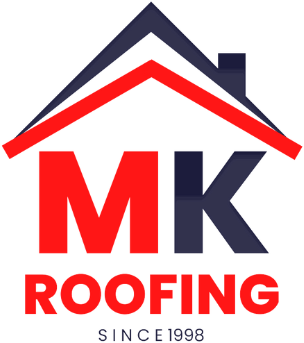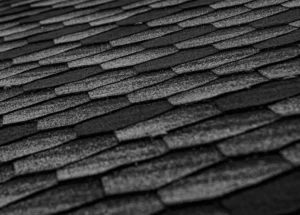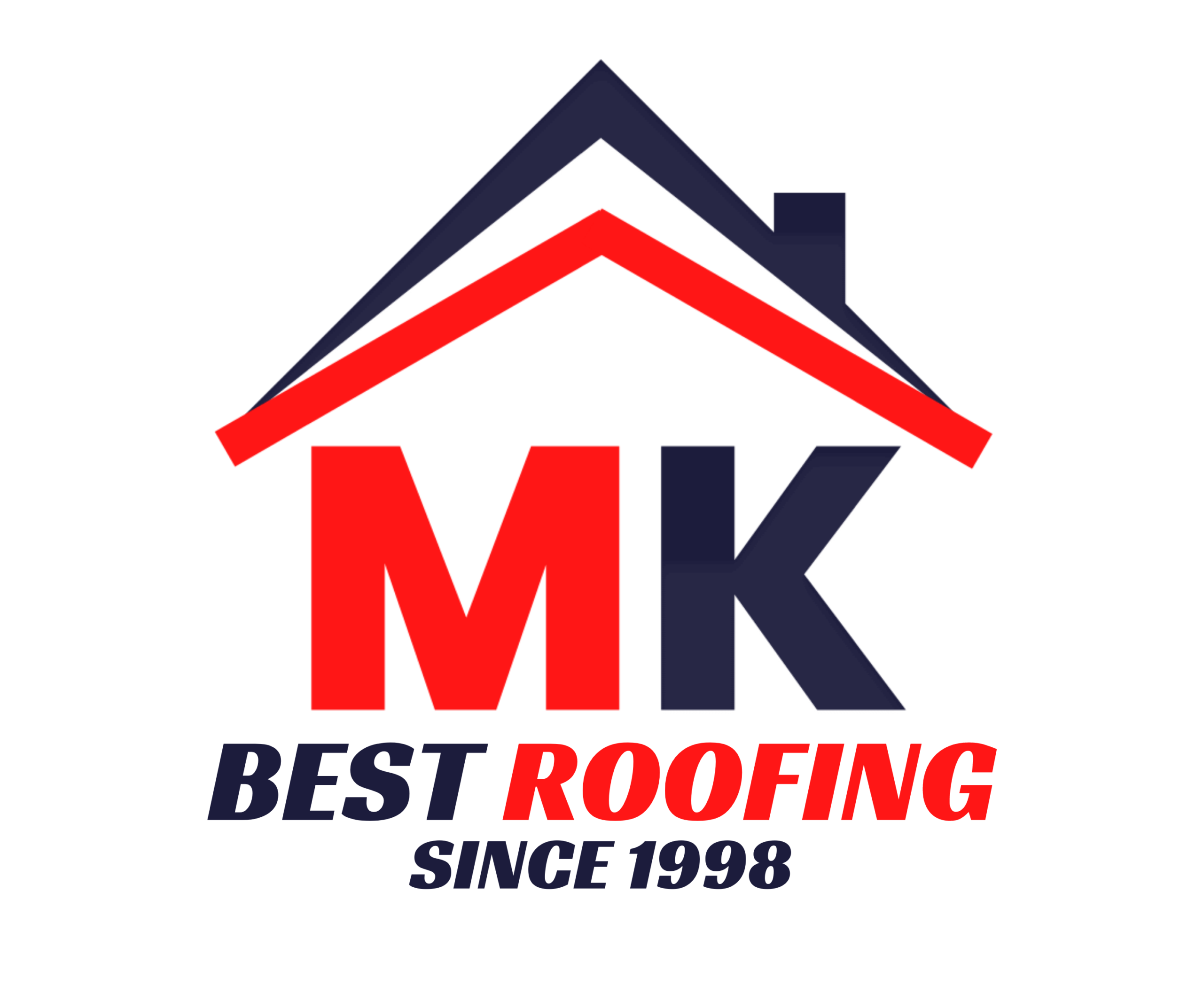Slate is one of the most durable and appealing materials in the roofing industry. But do you know about its history? Well, the first commercial slate quarry opened just in 1785 in Peach Bottom, Pennsylvania, which shows that the industry was largely local until the mid-1800s. Slate roofing is still just as popular due to its wide range of benefits including a long-life span, over a century to be precise, if taken care of properly. The beauty of slate however goes beyond simply being long lasting. It adds natural beauty to any structure, can withstand severe weather conditions, it is eco-friendly, and fire-resistant as well. To know more about slate roofs, their installation, maintenance and other aspects associated with them, read this guide till the end!
What is a Slate Roof?
A slate roof is constructed using natural slate tiles that have been quarried and split into thin flat pieces. Slate roofs are renowned for their ability to withstand weather extremes and their aesthetic appeal, which gives a property a very refined and elegant look.
The look of a slate roofing system is characterized by smooth and flat tiles which can come in various colors ranging from black and gray to different shades of purple, green, and even red. Adding to the overall appeal of the stone is its natural cleft texture that further enhances the look and makes them visually more attractive.
Typically, such roofing is done using tile which is rectangular, but they can be custom made into different shapes and sizes to meet the design preference. This type of roofing can be seen on certain historic buildings, but now they are commonly used for modern houses to add a traditional or rustic touch.
Benefits of a Slate Roof
There are many reasons to select a slate roof for your house more than its appeal. Let’s look at them in detail:
- Durability: Slate roofing is known to be one of the longest lasting roofing materials in the market. If properly installed and maintained, it can serve for more than 100 years and even more than that, which is quite long as compared to asphalt shingles that may need replacement after every 20-30 years.
- Fire Resistance: Slate tiles are impermeable to fire and are highly effective in protecting property from fire disasters such as wildfires and other fire incidents. This quality makes slate roofing a safe choice for homes in regions that are at high risk of fire disaster.
- Weather Resistance: It has a high tolerance to adverse weather conditions such as heavy rain, snow and even strong winds. This is because it is a strong material that cannot easily be damaged by harsh conditions that would affect other roofing materials.
- Aesthetic Appeal: Slate looks like natural stone and gives a classy and elegant look. It is also available in various colors and textures to cater to people with different tastes.
- Eco-Friendly: Slate is a natural product which does not have a negative effect on the environment as much as other roofing materials which may be synthetic. It also means that there is less waste produced over time since the frequency of replacements is not very often.
Cost of a Slate Roof
It is important to know the costs that are involved when considering a slate roof. Roofing. It is one of the costliest roofing materials, but the durability and appeal compensates for the cost factor. Installation of slate roofs costs between $10 and $30 per square foot. For a standard 1,000 square feet roof, costs can vary from a minimum of $10,000 to a maximum of $30,000 based on factors such as the design of the roof and the kind of slate used.
Types of Slate Roofing Materials
Choosing the right type of slate roofing material is essential to ensure that it meets both aesthetic and functional needs. Here’s all you need to know:
Standard (Uniform) Slate Roofs
The slates used in the standard roofs are all the same size, that is their length, width and thickness is the same and they are between ¼ and 3/8 inches. The tiles are cut into squares and stacked in straight horizontal lines in a perpendicular manner with their vertical seams well aligned.
Patterned Slate Roofs
Patterned slate roofs tend to be decorative by incorporating slates that are of varying colors or shapes. Such patterns may include stripes, flowers, geometric shapes to name a few, as well as words and dates.
Random Width Slate Roofs
It includes slates which are different in widths but share the same length, as well as thickness. These tiles are divided in rows like any other standard roofing; however, they have a more varied appeal due to the vertical joints not being strictly aligned.
Multicolored Slate Roofs
Multicolored slate roofs are the result of joining slates of various colors together to create a blended look. This is mostly done using random tiles of the same length but varying the width of the tiles as well as using two or more shades to create the multicolored look.
Graduated Length Slate Roofs
Graduated length slate roofs consist of slates that vary in length and width. They are systematically piled on, starting with the largest tiles which go on first on the lower end, as they are meant to handle large amounts of water. The small tiles are gradually placed at the top to achieve the slight tilt effect while making sure the water flow is smooth.
Thickness Slate Roofs
These roofs combine slates of differing sizes and thicknesses. At the base are larger slates which are thicker and as you go up the roof thinner and smaller slates are placed. This principle improves the look and durability of the roof.
Textural Slate Roofs
Textural slate roofs utilize slates that have rough edges and varied thicknesses. Upon installation of such tiles, roofs are expected to have a rugged, uneven look. Some tiles might have chipped edges or lost their corners to create a rustic look.
Hang-Down Slate Roofs
With this type, longer slates are used with their heads aligned to the same course line but reaching beyond the butt line of the other slates to give a more distinctive hang-down appearance.
Slate Roof Installation
When installing slate roofs, it is critical to exercise caution when working on the roof, as long-term performance and durability are important considerations. First, the roof structure is inspected and reinforced if necessary because slate is heavier than most materials. A thick piece of solid wooden base, measuring between 2 and 3 centimeters, is used for support, followed by a felt underlayment to provide extra strength and protection during installation.
Slate tiles are fastened to the roof using two galvanized or copper nails per tile. The tiles are layered to prevent water from penetrating the surface. There is a risk of damaging the shingles by inadvertently driving the nails too deeply. Critical areas are protected with copper flashing, such as in the intersections of roof and walls and around the chimney. Because of how complex the work is, it is best for it to be done only by roofing professionals.
Slate Roof Maintenance Tips
It is important to ensure that the slate roof is well maintained to increase its durability and effectiveness. Here are some useful tips:
- It is recommended that you check your roof at least twice in a year especially after severe weather conditions to check on broken or missing tiles.
- Make sure that the gutters are clean to allow free flow of water and to avoid accumulation which can destroy the roof.
- To get rid of the moss, one needs to use a soft brush and a mild cleaner so as not to cause any harm to the tiles.
- For damaged tiles or for any repairs, it is always advisable to seek the services of professionals to avoid causing more damage.
- Check the flashing around chimneys and vents for any kind of damage or corrosion and replace it if necessary.
- Avoid walking on the slate roof as much as possible. If needed, you can place planks to support the weight.
Conclusion
A slate roof is a smart investment that adds beauty and long-lasting protection to your home. With proper care and maintenance, it can last over a century. Regular checks and timely repairs are essential to keep it in top shape. By following simple maintenance tips and working with professionals, you can preserve your slate roof for generations. Whether you’re planning to install one or care for an existing roof, understanding these basics ensures you enjoy the elegance and durability slate roofing offers.
Choosing to install a slate roof is a highly beneficial decision, both regarding the attractiveness and the endurance it provides to your house. It is considered normal for a well-preserved roof to last more than a lifetime, and if properly maintained, the roof can last for more than a hundred years if cared for. However, frequent evaluations and timely repairs are required to keep your roof in the best condition. It is better to hire roofing professionals to help you properly install and maintain your slate roof. So, if you’re thinking of replacing your roof with a timeless option, then hire the best roofing contractors near you offering high-quality slate roofing installation services.
FAQs
Can you walk on a slate roof?
It is not advisable to walk on a slate roof as slate tiles are quite brittle and can easily shatter or chip. Furthermore, even while the tiles appear to be reasonably intact, jumping on them or walking on them can cause microfractures which can lead to leaks in the future. If walking is required, utilize planks to distribute the weight and protect the roof from potential damage.
Are slate roofs good?
Absolutely, due to their capacity to endure extreme weather conditions while still retaining an appealing appearance, slate roofs are a great roofing option. Additionally, they require minimal upkeep and have an impressive longevity of over a century. That said, they are not budget friendly as they are among the priciest options available.
How do you clean a slate roof?
Slate roofs should be cleaned with great care as they can be easily damaged. Using low pressure washing or a soft brush to remove dirt and moss. If deep cleaning is required, hiring a professional who knows how to clean them without cracking them is recommended.
Are slate roofs better than tiles?
When comparing traditional tile roofs and slate roofs, a slate roof is stronger, more weather resistant, and can last longer. However, slate does come with its fair share of hassle. They are heavier and more expensive in comparison to tiles. While choosing between slate and tile roofs, one must consider their home style and their budget to make an informed decision.
Can you install solar panels on a slate roof?
Solar panels can indeed be attached to slate roofs, but experts point out that this is not an easy process. Slate tiles are brittle solar, so special mounts are required to prevent destruction. Installing solar panels can be tough, and more expensive than other roofs, but it is also possible with the correct expertise.
Does a slate roof add value?
The beauty of a slate roof and strength helps adding substantial value to a home. It’s worth noting that this is a sought-after characteristic which is evidence of proper construction and high upkeep. It is common for properties with slate roofs to demand a better price than those without them.







